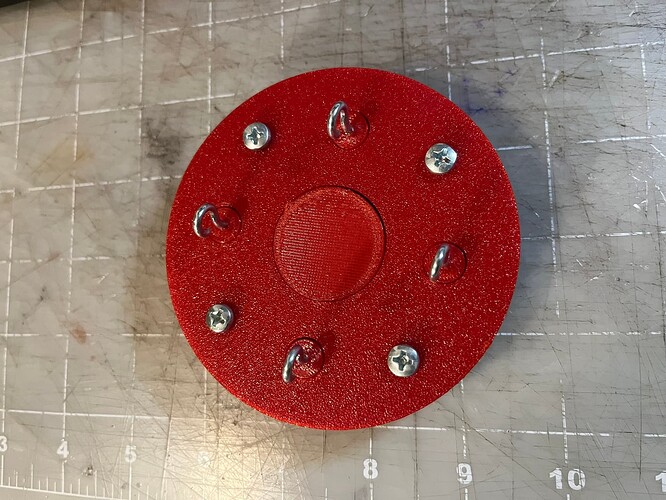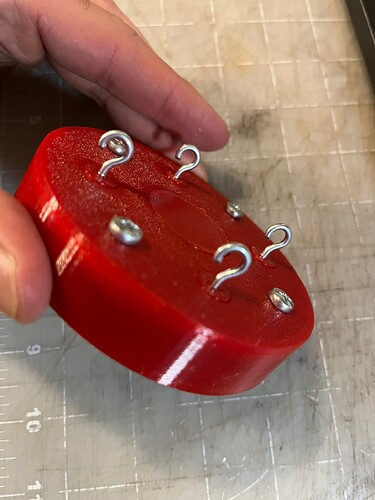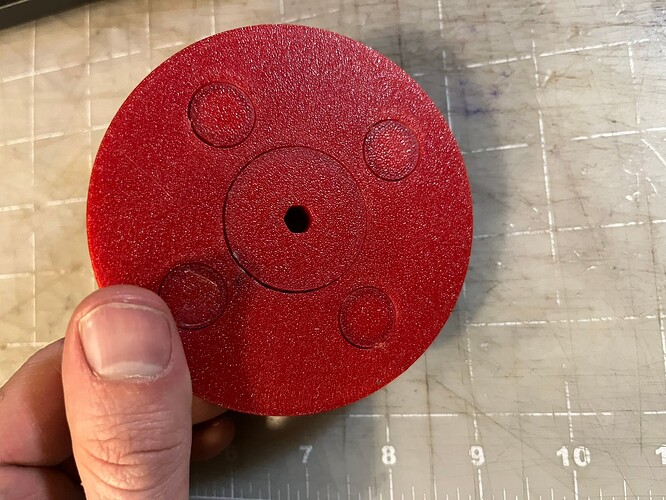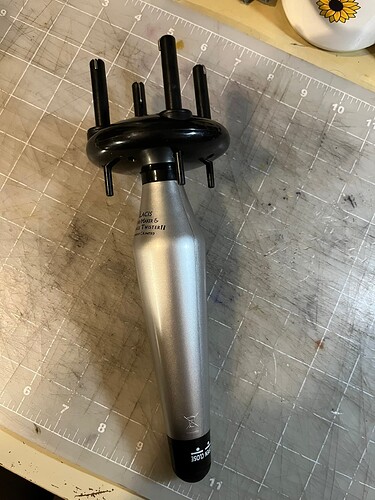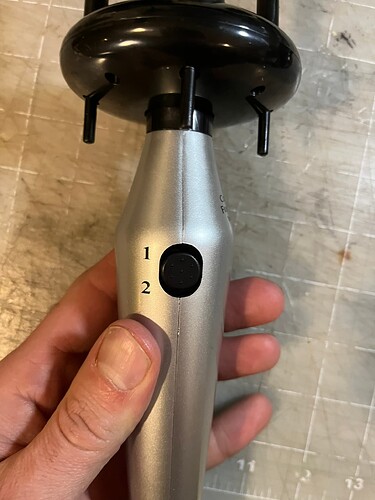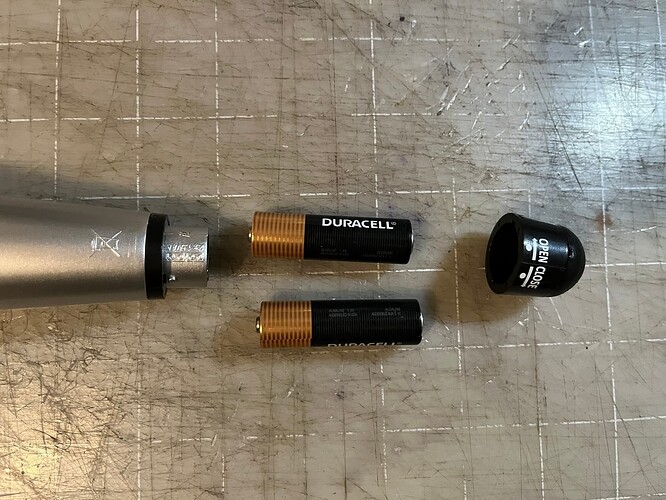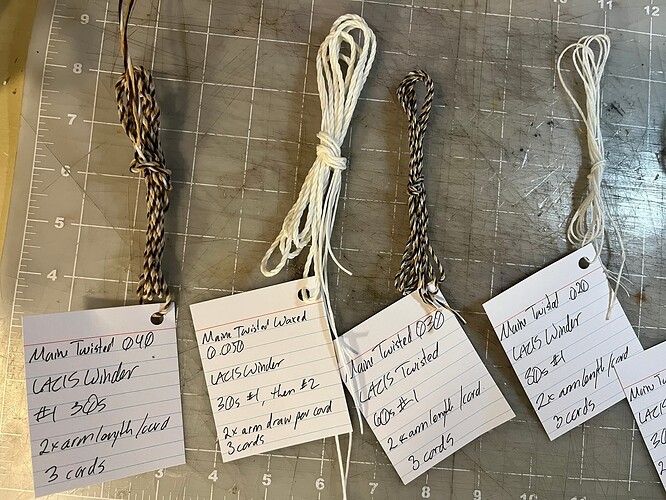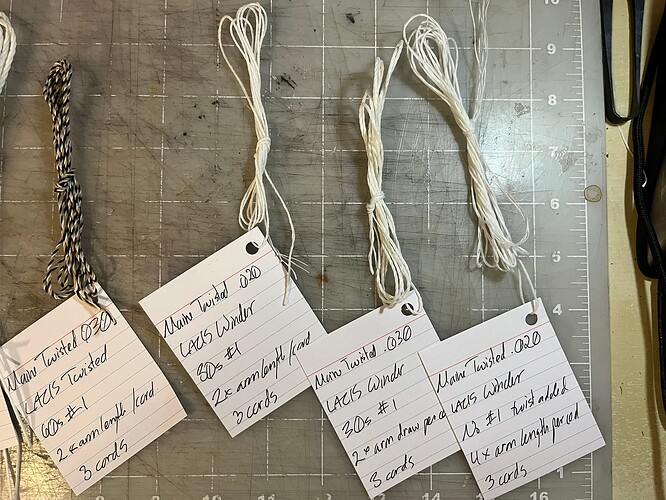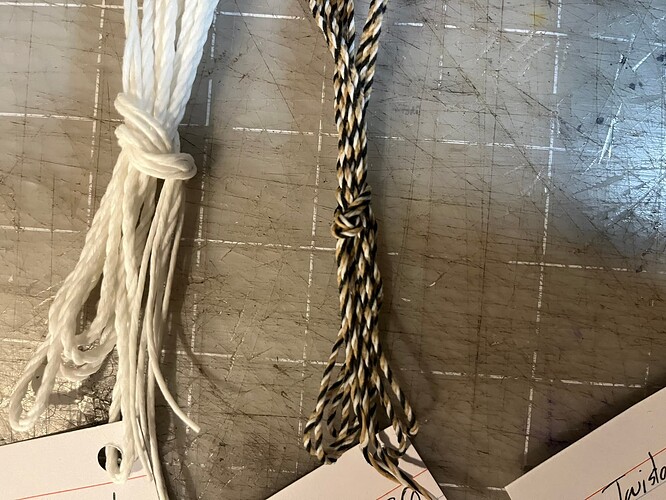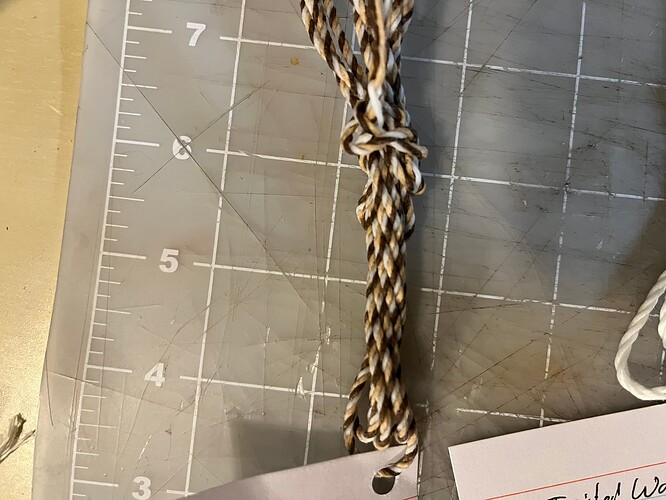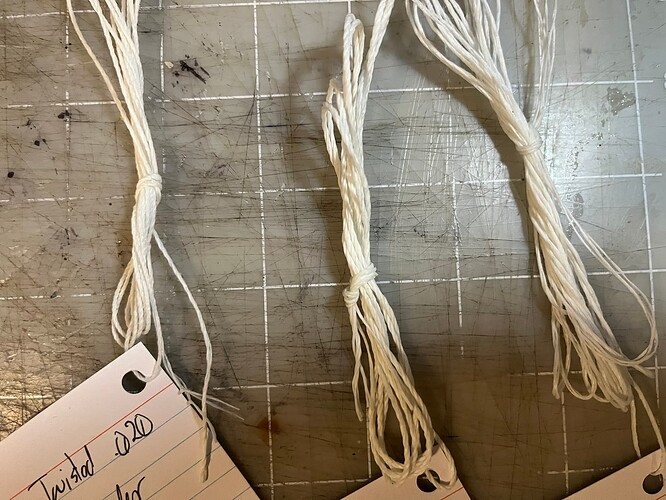I’m really into decorative hand stitches, and have seen a lot of makers using neat multi-strand twisted cords, especially on Norwegian, Goiser, other styles with inseams visible on the outside or threads braided into the tops of the outseams.
First Try: 3D Printed
I built a drill-powered, 3D-printed cord winder from these freely available models some time ago, but had trouble getting started with it. I used screw-in hooks as cord mounting points as suggested, but had trouble getting thread to stay fastened securely enough to pull taught and keep cords from getting tangled in each other. That said, I’ve seen photos online of very nice results from this winder in particular. That’s why I built one.
You can put any old hex-shaped drill bit into the hex-shaped hole at the back. To twist each individual cord, hold the outer circumference of the tool with your hand and run the drill. To countertwist the cords together, as well, release the tool and let the whole thing spin when the drill runs.
Second Try: LACIS Winder
More recently, I finally stopped by LACIS, a fiber-arts store in nearby Berkeley, and discovered they’ve long had purpose-built, battery-powered cord winders made and imported for sale. They currently run about $30. The listing in their online store is “Cord Maker 2-Spindle Cord & Fringe Replaceable Head”.
The design is definitely light-plastic-gizmo. It’s a somewhat flimsy feeling contraption. But rather well designed, especially the neat spring-loaded hooks for attaching cords and the two-position switch for twisting cords (1) and countertwisting them together (2). I finally gave it a try this evening, and got up and running pretty much immediately making samples.
These are all three-cord threads. The tool has attachment points for four, but to do less, you can just leave one or more empty.
Style-wise, my takeaway so far is that the effect isn’t really noticeable with thinner threads—Maine 0.020" or 0.030"—especially in the same color. On the other extreme, three cords of 0.050" produces a very, very chunky thread that looks neat, but is probably too much for any design I can think of. Three cords of 0.040" is still a lot of thread, but probably a neat option for robust boots and very robust shoes.
The ability to candy-cane whatever colors I want opens up some possibilities.
Upshot
I don’t usually go for power tools. This is currently the only one involved in my shoemaking, unless you count electric lights or a window A/C unit. But I’d definitely recommend the LACIS for anyone looking to get started quickly for $30.
